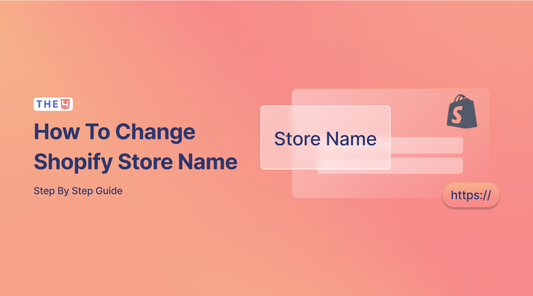Table Of Content
Shopify vs Magento: Which Is the Right Platform for Your Business?

Choosing the right eCommerce platform is a critical decision that can significantly impact your online business. With a sea of options available, navigating through to find the one that precisely fits your business needs can seem like a daunting task. Two prominent players in the eCommerce platform arena are Shopify and Magento, each having its unique set of features and benefits.
In this comprehensive comparison of Shopify vs Magento, we'll dive into the functionalities, pricing, usability, and more of each platform. Whether you're a budding business stepping into the online world or an already established enterprise looking to scale, this guide aims to provide insightful details to help you make an informed decision.
Before going into the details, make sure you have built an eCommerce store on Shopify!
Shopify vs. Magento At a Glance
What is Shopify?

Shopify is a comprehensive e-commerce platform that allows individuals and businesses to create online stores and sell their products. Founded in 2006, Shopify has become one of the leading e-commerce solutions in the world, known for its user-friendly interface and diverse range of features.
The platform offers a myriad of services such as customizable storefronts, secure payment processing, integrated marketing and SEO tools, shipping and logistics support, inventory management, and much more. It also provides a range of themes and plugins, enabling businesses to tailor their online stores to their specific brand and functional requirements.
Moreover, the capacity to seamlessly connect with a multitude of social media platforms and online marketplaces extends the potential audience for businesses. With a staggering count of over 4.12 million e-commerce websites globally relying on Shopify, the platform's effectiveness and reliability are undeniably evident.
What is Magento?

Magento is an influential open-source platform, launched in 2008, tailored for e-commerce businesses. Renowned for its adaptability and ability to scale, Magento is equipped with a multitude of tools to optimize online sales and improve customer experiences, including product catalog management, a robust shopping cart system, and effective search engine optimization capabilities.
The standout feature of Magento is its inherent flexibility. Being open-source means developers can adjust the source code to suit their unique requirements, customizing features. It also boasts extensive compatibility with a range of third-party integrations, spanning areas like payment processing, shipping logistics, and marketing.
While Magento is undeniably powerful, its complexity necessitates a certain level of technical proficiency to manage, potentially more so than other e-commerce platforms. It's also noteworthy that, as of 2021, Magento was acquired by Adobe and rebranded as Adobe Commerce, integrating with Adobe's suite of commerce solutions.
What are differences between Shopify and Magento?
1. Ease of use:
The reality of the e-commerce landscape is that most individuals diving into the world of online business are not professionally trained web designers or developers. Even those who possess a basic understanding of the principles behind these fields typically yearn for a platform that's straightforward to establish and manage.
Let's embark on a comparative journey to ascertain how Shopify and Magento measure up when it comes to user-friendliness and ease of use.
* Magento
When assessing the user-friendly nature of Magento, it becomes apparent that it doesn't quite match up to Shopify's standards, especially for users who aren't particularly tech-savvy. Magento is designed with the power to bestow users with absolute control over their websites. However, this freedom comes with a cost - a thorough comprehension of technology is crucial for installing and setting up an online business on this platform. So, while it might be a technophile's dream, it may seem more of a hurdle for those without a strong tech background.
* Shopify
Switching gears to Shopify, the platform clearly has an advantage over Magento in terms of user-friendliness. The very fabric of Shopify, as a hosted platform, allows for a remarkably easy-to-use e-commerce solution. Designed with inclusivity in mind, Shopify caters to a wide range of users, from tech enthusiasts to those with a mere smattering of technical knowledge. As such, when it came to constructing our online store on Shopify, we encountered minimal challenges, showcasing the platform's user-friendly nature and intuitive design.
2. Pricing
Navigating the pricing landscape of Magento and Shopify can be complex. Let us guide you through the differences in their pricing strategies, shedding light on which platform delivers the best bang for your buck.
* Magento:

(source: litextension)
Magento operates on a different financial model than subscription-based platforms. It's an open source platform, which means you can download, install, and set up your online store for free. However, it is worth noting that introducing your store to the world is not free. When using Magento, you need to shoulder the cost of a domain name and hosting provider to bring your website to life. As a result, the final metrics for running a Magento website can vary greatly based on your choices.
Furthermore, if you are looking to upgrade your store with additional functionalities, the Magento App Market is here to serve you. It is filled with integrations that can greatly enhance your website capabilities. However, keep in mind that the cost of these apps can vary widely and in some cases, they can add up to a whopping $15,000.
* Shopify

Contrasting Magento, Shopify employs a subscription-based pricing model. We put it to the test by building a similar store to the one we did on Magento. Shopify offers three primary pricing tiers, with costs ranging from $39 to upwards of $399 per month. The silver lining here is that this price bracket encapsulates both domain and hosting fees, eliminating the need for separate investments.
Digging deeper, Shopify seems to edge out in terms of cost-efficiency when it comes to themes and website templates. Whereas a top-of-the-line theme on Magento can set you back by up to $499, Shopify’s high-end website templates cap at a more affordable $350. However, it's worth mentioning that Shopify's transaction fee calculation can get a bit complex, being dependent on your chosen subscription plan.
3. Themes & templates
The aesthetic of a platform is often a key consideration for many businesses, including ours, right after budget and ease-of-use concerns. This is because the initial impression that customers get is incredibly important, and themes play a crucial role in reflecting the distinctiveness and attractiveness of your brand. So, let's dive into our independent research on the theme offerings of Magento vs Shopify!
* Shopify
Starting off with Shopify, one aspect that we greatly appreciate is the expansive range of themes it offers. With over 100 options available in its Shopify theme store, finding a theme that perfectly aligns with your vision won't be an issue. However, the cost could potentially be a stumbling block for some. Most Shopify themes fall within the $150 – $350 range, which might feel somewhat pricey for certain users. On the brighter side, Shopify provides a host of features. These include a drag-and-drop editor, mobile-optimized themes, high loading speed, easy page creation, color palette and image customization, and simple integration with social media feeds.
Read more: Top 21 Best Shopify Themes
* Magento:
Magento's theme offering is more limited, with only 6 fully mobile responsive themes available. They come with a heavier price tag of up to $499. However, Magento does offer the flexibility to build your theme from scratch, given that you possess strong coding skills or the budget to hire professional help. In terms of standout features, Magento provides extensive customization options (provided you have a solid technical foundation), the ability to add animations to enhance store engagement, a featured product slider for the homepage, newsletter options for webpage footers, and the facility to place “cross-selling blocks” on your product pages.
4. Apps & Extensions
While themes play a pivotal role in determining the look and feel of your website, the integration of extensions or apps is key to enhancing its functionality. Both Magento and Shopify offer comprehensive app stores and extensions that are typically just a click away, providing your e-commerce site with an array of additional features.
* Magento:

Magento currently offers close to 5700+ extensions via the Magento marketplace. These can be installed and implemented without the need for in-depth coding knowledge. Several standout extensions caught our attention during our research. For instance, the Mageplaza extension enables product promotion through custom discount options. Similarly, the Product Pre-Order plugin can automatically send emails to potential customers when a new product becomes available. Furthermore, we found Adobe Exchange Partner - Magezon - noteworthy, as they offer quality Magento Extensions like Magezon Builder (a key product package) and a range of free products.
* Shopify:

Shopify takes the lead in comparison to Magento in terms of app offerings. Shopify's App Store houses over 8000+ free and paid apps that can elevate your store's features, streamline store management, and augment sales. These apps can prove to be useful even for those operating on a tight budget. For instance, EComposer- Shopify Page Builder stands as a top-tier website builder app, and Avada SEO can significantly improve your SEO efforts. Shopify's app market is filled with gems that cater to a variety of needs, from boosting customer engagement to improving the efficiency of backend operations. It's a valuable resource that you can tap into to build and grow a successful online store, regardless of your budget constraints.
5. Marketing Features
* Shopify:
Shopify is well-equipped with SEO features that allow users to tailor page titles and descriptions, impacting how their store is showcased on search engine result pages. The platform also supports the addition of alt text to images, which assists search engines in understanding the content. Shopify takes SEO capabilities further with the availability of additional apps like SEO Booster. This specific app helps users identify and swiftly fix SEO-related issues, ensuring optimal website performance.
Shopify also excels in providing unique marketing features. A built-in email tool lets users promote their products and share updates efficiently. This tool comes complete with a range of attractive email templates, which can be customized to align with the brand while maintaining a professional look.
* Magento:
Similarly, Magento presents strong SEO tools that enable users to alter page titles and descriptions, determining their store's appearance on search engine results. Adding alt text to images is also a breeze with Magento, aiding search engines in deciphering image content.
Magento extends its offerings with a versatile suite of marketing features. Users can freely create flexible coupons for multiple purposes, establish landing pages for different categories, and manage newsletters effectively. Magento's focus on flexibility and control provides users with extensive possibilities for promoting their online businesses.
6. Payment & fees
* Shopify:
During the process of our setup, we noted that Shopify provides access to over 100 Payment Gateways, although some specific charges are applicable.
- Fee for processing credit cards: For every transaction, your payment service provider levies a fee that covers the cost of data transmission between the buyers, sellers, issuing banks, and acquiring banks. In our instance, the charges incurred were dependent on the chosen Shopify Plan.
- Fee for transactions: Shopify imposes a distinct fee for each transaction, the amount of which varies based on your selected plan.
+ Shopify Lite: 2.4%
+ Basic Shopify: 2%
+ Shopify: 1%
+ Advanced Shopify: 0.5%
+ Shopify Plus: 0.15%
In an effort to reduce the costs for e-merchants, Shopify also features a user-friendly payment processor named Shopify Payments, which is free of charge. Additionally, customers who opt for Shop Pay can enjoy transactions free of cost!
* Magento:
Magento, unlike Shopify, doesn't feature an integrated payment solution. This fact necessitates the process of downloading and installing a distinct payment processing extension from the Magento marketplace, which subsequently incurs a transaction fee for usage. In reality, Magento had made available an extensive variety of 339 different payment options that store proprietors could select from, providing a broad spectrum of flexibility in catering to diverse payment preferences.
One illustrative example of this system would be if you chose to utilize PayPal as your designated Magento payment gateway. In this scenario, PayPal's charges would apply to every transaction processed. These fees amount to 3.49% + $0.49 for every transaction that is processed within the United States. However, the rate changes to 5.0% for transactions involving international cards. It's worth noting that despite these transactional costs, there are no associated setup or monthly fees, which can be seen as a cost-saving factor.
Additionally, a notable benefit of Magento's payment applications is their multilingual support. This is a particularly significant feature for those merchants looking to extend their eCommerce operations to international markets. The capacity to provide a seamless and user-friendly transaction experience in the customer's local language can greatly enhance the customer experience, thereby potentially boosting sales and customer retention rates.
7. Other Functionalities
|
Magento |
Shopify |
|
|
Dropshipping |
Available via the Magento Dropship extension ($249 fee). |
Available via integration with Oberlo |
|
Provisions for coupons |
Available in the base offering. |
Available on every plan excluding the Lite plan. |
|
Multilingual capabilities |
Supports multiple languages out of the box. |
Requires third-party/paid apps for full multilingual support. |
|
Security |
Allows users to enhance security independently or via Magento extensions. |
Offers Fraud analysis, SSL certificates for all sites, PCI compliance, and GDPR compliance. |
|
Currencies |
Supports over 200 global currencies. |
Capable of handling transactions in 133 currencies. |
|
Scalability |
Highly flexible and scalable, capable of handling high traffic levels. |
Suitable for both new and established sellers, with Shopify Plus available for enterprise-level needs. |
8. Help & Support
* Shopify:

Shopify prides itself on providing top-notch customer support available round the clock. Regardless of your location or the time, you can rest assured there's a dedicated team ready to resolve your issues swiftly. They can be reached through a variety of channels - phone, email, and live chat.
In addition to this, Shopify provides extensive resources including active community forums, a detailed help center, comprehensive API documentation, and a wealth of video tutorials. If these resources are not sufficient or if you prefer personalized assistance, you also have the option to engage certified Shopify experts who can guide you in resolving issues and optimizing your business operations.
*Magento:

Given that Magento is a self-hosted platform, it doesn't offer live chat, phone, or email support unless you opt for the Magento Commerce Cloud plan for B2B. This could potentially make the process of setting up a Magento store a bit challenging at times.
However, Magento boasts a vibrant user community where you can tap into a network of global Magento experts for valuable advice. Despite the lack of formal support, this community can be an invaluable resource in navigating the platform.
Shopify vs. Magento: Pros and Cons Summary
To help you choose the platform that best fits your requirements, we've put together a detailed comparison of the strengths and weaknesses of both Shopify and Magento. Our aim is to equip you with the information needed to make a well-informed choice about the right platform for your business.
|
Shopify |
Magento |
|
|
Pros |
- Multichannel Selling: Shopify allows users to sell on various platforms like Facebook, Instagram, Amazon, and eBay from a single interface. - Mobile Responsive Themes: Shopify offers over 70 adaptable themes, including ten free options and premium ones starting at $140, helping to create a unique storefront. - App Store: An extensive app store broadens your site's functionality, offering solutions for various e-commerce needs. |
- Large User Community: Magento's extensive community provides invaluable insights and solutions on the Magento Forum. - High Flexibility: With proficient coding skills, users can customize their store without restrictions, aligning with their unique brand. - Suitable for Large Businesses: Ideal for medium to large businesses, Magento is especially beneficial for companies with in-house web development teams or resources to hire a developer. |
|
Cons |
- Transaction Fees: Unless using Shopify Payments, users are subject to transaction fees on sales made through the platform. - Cost of Apps: While the app store provides numerous benefits, the costs for premium apps can accumulate quickly, potentially increasing operating expenses. |
- Not Beginner-Friendly: The technical complexity and developer-specific jargon make Magento less suitable for beginners. - Difficult to Install: Compared to other platforms, Magento is more challenging to install and finding a compatible hosting provider, like SiteGround, can be more difficult due to its resource-intensive nature. |
Frequently Asked Questions
1. Can I use Shopify and Magento together?
Shopify and Magento are both robust e-commerce platforms, each providing a comprehensive suite of features for website design, inventory management, and payment processing. Shopify is a user-friendly, all-inclusive solution, while Magento offers more customization and control. As they're designed to operate independently, using them together is not usually practical or recommended. The choice between them should depend on your business needs and technical skills.
2. Does Shopify outperform Magento?
Shopify and Magento are both significant players in the e-commerce platform arena. Magento, known for its open-source nature, hands over the reins to the users, allowing for deep customization and control. This makes it a perfect choice for those with the technical know-how and the desire to fine-tune their online storefronts.
In contrast, Shopify operates as a fully hosted platform. It provides a comprehensive, user-friendly service for those aiming to construct and manage an online business. Shopify takes the burden of handling technical aspects, enabling business owners to focus more on their product range and marketing strategies. When it comes to "outperforming," it's largely a matter of specific business needs and objectives.
3. Is Shopify the best eCommerce website builder?
Shopify is a leading eCommerce website builder known for its simplicity, extensive features, and strong support system, making it an excellent choice for beginners and small to medium businesses. However, the "best" platform is subjective and depends on specific needs and skills. Other platforms like Magento, WooCommerce, or BigCommerce may be better suited for some due to their unique features. Therefore, while Shopify is a strong choice, determining the "best" requires evaluating your business's specific needs.
In a nutshell
In conclusion, the decision between Shopify and Magento is truly dependent on the specific needs and resources of your business. Each platform offers its unique features and advantages, catering to different business scales and industries.
We hope that this thorough comparison of Shopify and Magento has been insightful and aids you in making a well-informed decision. If you have any questions, contact us via the4.co or chat with us directly via EComposer.
=================
Add EComposer Next generation page builder Here
Follow Us on Facebook
Join Official Community













No comments